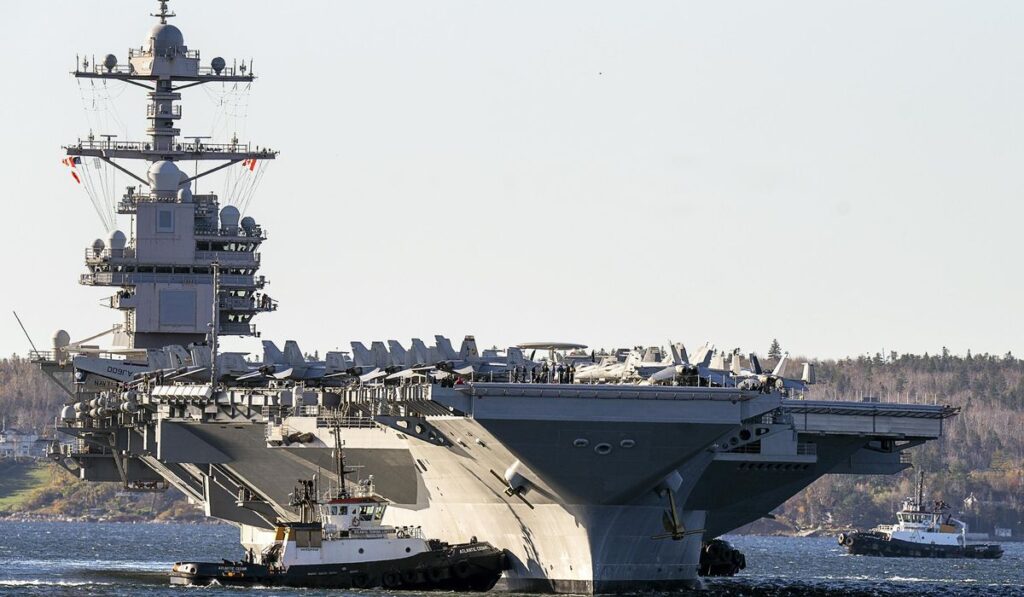The Department of Defense has ordered the USS Gerald R. Ford carrier and an accompanying strike group to the Caribbean to intercept suspected drug-smuggling vessels, marking a clear escalation in the Trump administration’s push to disrupt transnational trafficking networks and protect America’s southern approaches.
Sending a carrier strike group into the Caribbean is a loud, visible statement that the United States takes drug interdiction seriously. This move expands naval presence where smugglers operate and supports partners who need help disrupting shipments before they reach our shores.
Using the Navy to pressure drug routes is smart, practical deterrence. The carrier provides sustained surveillance, aviation assets, and command-and-control capabilities that smaller ships and aircraft often lack, increasing the chance of successful interdiction missions.
The deployment bolsters joint operations with the Coast Guard, Southern Command, and regional partners who already patrol known corridors for cocaine and other hard drugs. When the Navy shows up, smugglers face greater risk of losing boats, cargo, and leadership, which raises the cost of doing business for cartels.
This administration has been consistent about treating the flow of illegal drugs as a national security problem, not just a criminal justice issue. Law enforcement on its own can only do so much; strategic military assets can break supply chains far offshore where seizures are more effective and less risky for American communities.
Critics will point to cost and the optics of warships near friendly nations, but deterrence is not cheap and absence of effort invites worse outcomes. A carrier strike group’s presence enables longer patrols, stronger aerial reconnaissance, and faster response times that tip the balance against well-funded trafficking networks.
Coordination matters: intelligence sharing, interdiction authority, and diplomatic clearances must be in place for operations to work and for regional governments to remain engaged. When the United States partners efficiently, local authorities can prosecute captures and follow the money, which makes seizures more than symbolic wins.
There are legitimate questions about rules of engagement and how far naval forces should go in international waters, but avoiding action because answers are imperfect cedes initiative to the cartels. The correct approach is to set clear legal boundaries while allowing commanders the flexibility to act against imminent threats tied to trafficking.
Beyond seizures, this deployment sends a political message: trafficking networks are not untouchable, and the U.S. is willing to use the instruments of national power to cut supply lines. That message supports border security efforts and reduces pressure on communities drowning in overdose deaths and violent crime linked to drugs.
Ultimately, deploying the USS Gerald R. Ford and a strike group to the Caribbean is about results—fewer shipments making landfall, disrupted criminal enterprises, and stronger regional cooperation. If you want safer neighborhoods and a firmer southern border, putting capable assets where the problem originates is a necessary part of the strategy.



